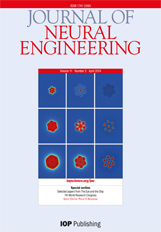|
Autores/as
Ramadi, Khalil B.; Dagdeviren, Canan; Bhagchandani, Preksha; Nuñez-López, Carlos ; Kim, Min Jung; Langer, Robert; Graybiel, Ann M.; Cima, Michael J. ; Kim, Min Jung; Langer, Robert; Graybiel, Ann M.; Cima, Michael J.
|
Abstract
The vast majority of techniques to study the physiology of the nervous system involve inserting probes into the brain for stimulation, recording, or sampling. Research is increasingly uncovering the fine microstructure of the brain, each of its regions with dedicated functions. Accurate knowledge of the placement of probes interrogating these regions is critical. We have developed a customizable concentric marking electrode (CME) consisting of an iron core within a 125 μm-stainless steel (SS) sheath for co-localization of targeted regions in the brain. We used a dielectric layer stack of SiO2, Al2O3, SiO2 to electrically encapsulate the iron core and minimize exposure area to avoid significant increases in inflammatory response triggered by the probes. The CME can record multi-neuronal extracellular firing patterns. Appropriate electrical polarity of the iron and SS components controls the deposition of iron microdeposits on brain tissue. We show that in vivo labels by this method can be as small as 100 μm, visible via noninvasive magnetic resonance imaging (MRI) as well as post-mortem histology, and illustrate how deposit size can be tuned by varying stimulus parameters. We targeted the CA3 area of the hippocampus in adult rats and demonstrate that iron microdeposits are remarkably stable and persist up to 10 months post-deposition. Using a single probe for recording and marking avoids inaccuracies with re-insertion of separate probes and utilizes iron microdeposits as valuable fiducial markers in vivo and ex vivo.
|

WoS
Scopus
Altmetrics

|
|
Publicación
Journal of Neural Engineering, 23 July 2020, v.17, n.4, 044001
|
